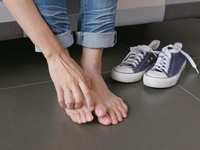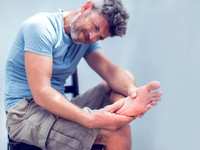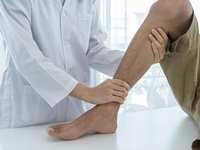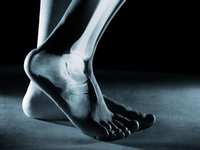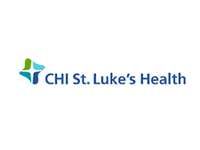- Categories :
- More
Categories
Circulation Issues in the Feet: Warning Signs, Causes, and When to Seek Help
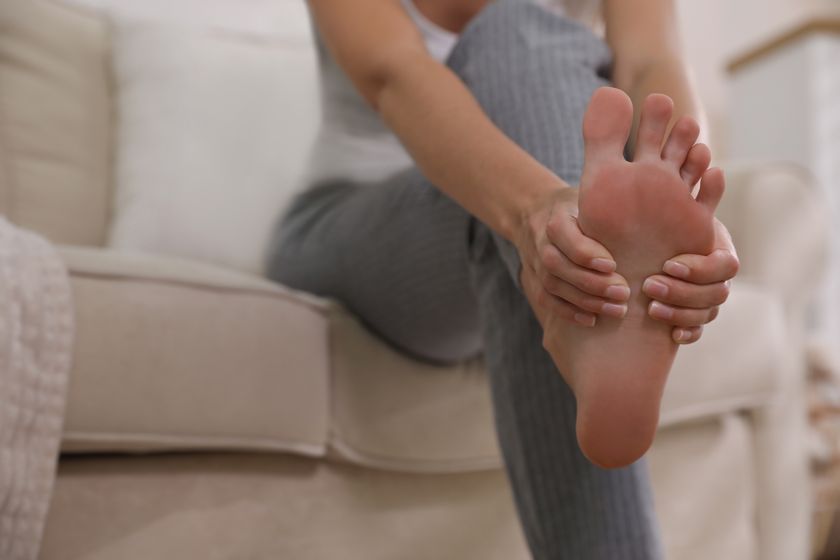
Proper blood circulation is crucial for overall health, and when it comes to our feet, it's especially important. Poor circulation in the feet can be a sign of underlying health issues that require attention.
“Your feet must last a lifetime, and most Americans log an amazing 75,000 miles on their feet by the time they reach age 50,” says the American Podiatric Medical Association. “Regular foot care can make sure your feet are up to the task. With proper detection, intervention, and care, most foot and ankle problems can be lessened or prevented.”
It’s important to pay attention to poor circulation of your feet because it can lead to injury, infection, and ulceration. Also, healing of the skin that has been injured is slower with poor circulation and that could lead to infection.
In this guide, we'll explore the prevalence, warning signs, causes, and steps to take if you suspect circulation problems in your feet.
Prevalence and Importance
Circulation issues in the feet are more common than many people realize. According to recent studies:
- Peripheral Artery Disease (PAD), a major cause of poor circulation, affects approximately 10 million Americans ages 40 and over, according to the National Institutes of Health via Yale Medicine.
- The prevalence of PAD increases dramatically with age, affecting 14.5 percent of those aged 70 years or over, according to results from the National Health and Nutrition Examination Survey.
- Among adults with diabetes, the prevalence of PAD is even higher, with a range of 20 to 30 percent, according to a research paper published in Clinical Cardiology.
- Poor circulation is often linked to other cardiovascular issues, with more than 95 percent of persons with PAD having one or more cardiovascular disease risk factors.
These statistics underscore the importance of awareness and early detection of circulation problems in the feet. Left untreated, poor circulation can lead to serious complications, including increased risk of heart attack, stroke, and in severe cases, amputation.
Warning Signs of Poor Circulation in Feet
Recognizing the symptoms of poor circulation is the first step towards addressing the issue. Be on the lookout for these warning signs:
- Numbness or tingling: A "pins and needles" sensation in your feet
- Cold feet: Persistently cold feet, even in warm environments
- Discoloration: Red, blue, or pale toes
- Swelling: Noticeable puffiness in the feet and ankles
- Pain or cramping: Especially when walking or exercising
- Slow healing: Cuts or sores on the feet that take longer to heal
- Hair loss: Unexpected loss of hair on the legs and feet
- Weak or absent pulse: In the feet or ankles
- Shiny skin: Unusually smooth or shiny skin on the legs
- Brittle toenails: Toenails that become thick, brittle, or grow slowly
- Muscle weakness: Difficulty moving your foot or toes
- Erectile dysfunction: In men, this can be an early sign of circulation problems
If you experience any of these symptoms persistently, it's important to consult a healthcare professional for a proper evaluation.
Common Causes of Poor Circulation in Feet
Several underlying conditions can lead to circulation issues in the feet. Understanding these causes can help in prevention and early detection:
- Peripheral Artery Disease (PAD): PAD is a common circulatory problem caused by narrowed arteries, reducing blood flow to the limbs. It's more prevalent in people over 50 but can affect younger individuals, especially smokers. It’s important to note that 4 in 10 people with PAD have no leg pain. Symptoms of pain, aches, or cramps with walking can happen in the buttock, hip, thigh, or calf.
- Diabetes: Diabetes can damage blood vessels and nerves, leading to reduced circulation and sensation in the feet. This combination can be particularly dangerous, as it increases the risk of unnoticed injuries and slow healing. The American Heart Association says that people with diabetes are at higher risk of developing atherosclerosis, the most common cause of PAD and people with PAD have a much higher risk of heart attack or stroke.
- Blood Clots: Clots can form anywhere in the body, blocking blood flow to the feet. They're especially dangerous as they can lead to serious complications if they move to other parts of the body. Deep Vein Thrombosis (DVT) is a particularly serious form of blood clot that can occur in the legs. The CDC says that 100,000 people die each year from blood clots and that treatment can be as much as $15,000 to $20,000 per person and often results in readmission to the hospital.
- Raynaud's Disease: This condition causes arteries to narrow temporarily, particularly in response to cold or stress. It often affects the fingers and toes, leading to chronic cold sensations and color changes in the extremities. The Raynaud’s Association estimates that 15 to 30 million people in the U.S. have the Raynaud’s phenomenon.
- Obesity: Excess weight can put pressure on the circulatory system, impeding blood flow to the extremities. It also increases the risk of developing other conditions that affect circulation, such as diabetes and high blood pressure.
- Sedentary Lifestyle: Lack of physical activity can lead to poor circulation throughout the body, including the feet. Regular movement helps pump blood back to the heart from the lower extremities.
- Smoking: Tobacco use significantly increases the risk of circulatory problems by damaging blood vessels and reducing oxygen in the blood. By some estimates, nearly a quarter of PAD-related deaths can be attributed to tobacco use.
- Hypertension: High blood pressure can damage the walls of arteries, leading to narrowing and reduced blood flow. The VA says that having high blood pressure makes it easier for plaque to form and build up in your artery walls. If high blood pressure isn’t controlled, you are more likely to have PAD and heart problems.
- Hypercholesterolemia: High cholesterol levels contribute to the buildup of plaque in the arteries, restricting blood flow. This raises your risk for PAD. If you have PAD, it’s likely arteries in other parts of your body are also affected, leading to higher risks of heart attack, other heart diseases, and stroke, according to the VA.
- Chronic Kidney Disease: Reduced kidney function is associated with a higher risk of PAD. The relationship between kidney disease and circulation problems is complex and bidirectional. The National Kidney Foundation Kidney Diseases Outcomes Quality Initiative guidelines recommend that all patients should be evaluated for PAD at the time of dialysis initiation by both a vascular physical examination and the use of physiologic or duplex ultrasound studies, or invasive testing as would be clinically indicated.
Prevention and Management
Taking proactive steps can help improve circulation and prevent complications:
- Regular exercise: Engage in activities that promote blood flow, such as walking or swimming.
- Maintain a healthy weight: This reduces pressure on your circulatory system.
- Quit smoking: Smoking significantly increases the risk of circulatory Manage underlying conditions: Keep diabetes, high blood pressure, and high cholesterol under control.
- Elevate your feet: When sitting or lying down, elevate your feet to promote blood flow.
- Wear proper footwear: Choose shoes that fit well and don't constrict blood flow.
- Stay hydrated: Proper hydration helps maintain good circulation.
When to Seek Professional Help
If you experience persistent symptoms of poor circulation in your feet, it's crucial to consult a healthcare professional.
At Sweeney Foot & Ankle Specialists, our experienced podiatrists can provide a thorough examination and diagnosis. Early detection and treatment of circulation issues can prevent serious complications and improve your overall foot health.
Circulation issues in the feet should never be ignored. By being aware of the warning signs and causes, you can take proactive steps to maintain good foot health. Remember, your feet can be early indicators of more serious health problems. Don't hesitate to seek professional help if you have concerns about your foot circulation.
Contact Sweeney Foot & Ankle Specialists today to schedule a comprehensive foot evaluation.
Comments •




